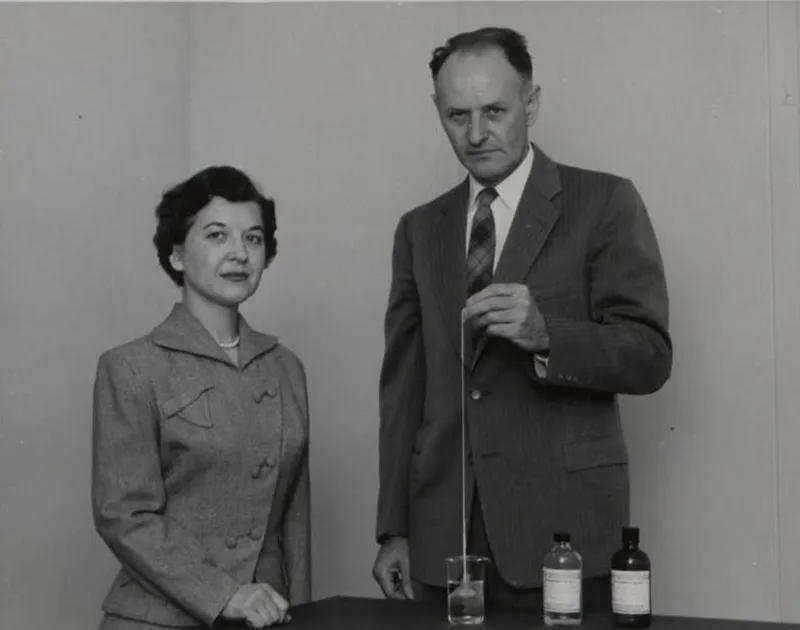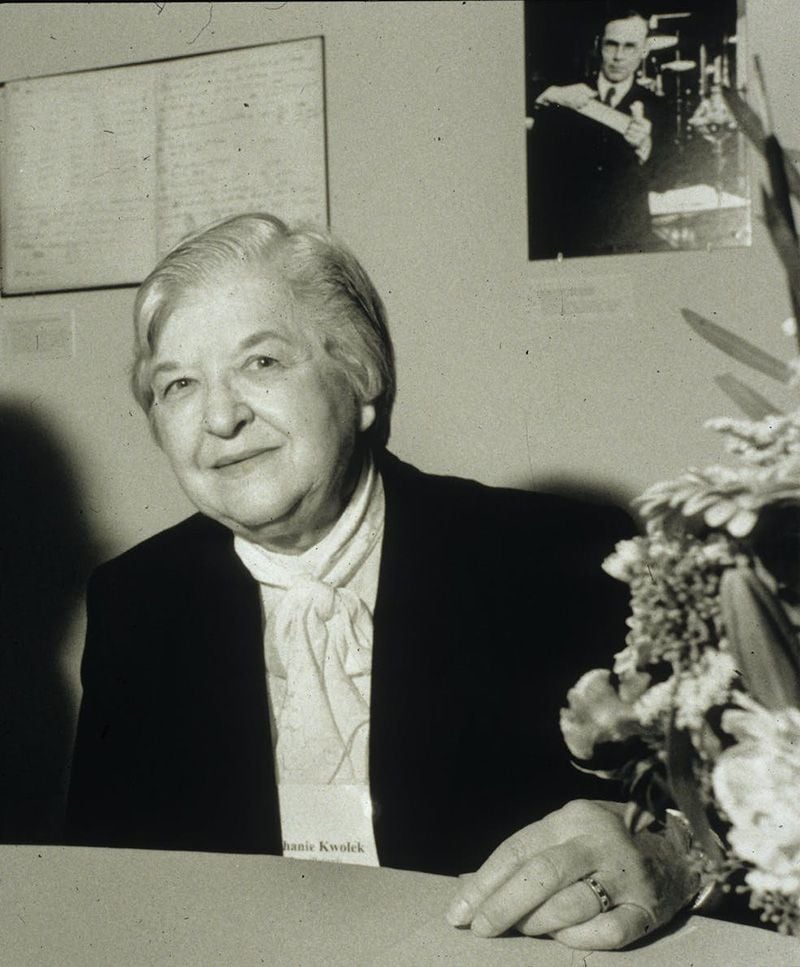You Can Thank Chemist Stephanie Kwolek for Bulletproof Vests and Yoga Pants
The long-serving researcher at DuPont invented kevlar and contributed to spandex
/https://tf-cmsv2-smithsonianmag-media.s3.amazonaws.com/filer/9a/cc/9acc2c04-16c6-46c6-b5ce-283f0d7522fd/stephanie_kwolek.jpg)
There’s a pile of fibers that Stephanie Kwolek helped invent. She laid the groundwork for NomexⓇ, the flame-resistant nylon-like material used in firefighters’ suits. She was involved in the development of spandex (LycraⓇ). But her most famous, most impactful science came when she cooked up a thin soup of polymers that could stop bullets in their tracks.
Kwolek’s initial ambition was not to be chemist at all. By my count, it was at least her third ambition. Born about 18 miles outside of Pittsburgh in New Keningston to Polish immigrant parents, she was first interested in fashion design, taking cues from her mother, who worked as a seamstress. She also learned about science from her father, a passionate amateur naturalist. They would walk quietly together in the woods, looking for small, modest works of natural art, like spiderwebs and leaves which she pressed into the pages of a book. As a child, she also wrote poetry.
After her father passed away, Kwolek cared for her younger brother while their mother looked for work. She said in an interview, “I did a lot of things. I didn’t start out to be a chemist. I was going to be a fashion designer, and that’s what I did as a child. I spent hours drawing, and so forth.” But, Kwolek’s mother commented that her daughter was “too much of a perfectionist” to work full-time in fashion.

Instead, she attended Margaret Morrison Carnegie College (later a part of Carnegie Mellon University) for a degree in chemistry, intending to become a doctor. To save up money for tuition for medical school, she applied for a job with the DuPont chemical company. At the end of the job interview she was told, by W. Hale Charch, DuPont’s research director, that she would hear back in a few weeks. She recalled, “With great boldness—I would never do it now—I said to him, ‘I wonder if you could possibly tell me sooner because there is another company that wants me to decide whether I should come and work for them.’ So he called in his secretary, and he dictated the letter to me while I was sitting there, and offered me the job” (Kwolek surmised she got the job because of her assertiveness). She intended to only work at DuPont temporarily, but found the work so interesting and challenging that she remained with the company for over 40 years.
Ten years into her permanent career as a chemist, Kwolek was cooking up synthetic fibers in search of a replacement for the steel used in tires (DuPont wanted something lighter to improve gas mileage in anticipation of a fuel shortage). Her work involved dissolving fragments of fibers called “polyamides” into a liquid and then spinning the liquid to form that fiber. Usually the liquids her group made were thick and clear, like corn syrup.
What Kwolek came up with was thin, opaque, and milky.
This solution was so alien that the scientist running the spinneret (the device that spins the liquid polyamides into fibers, like a spinning wheel making thread) was afraid Kwolek’s stuff would break their machine. After some convincing, they relented. The result was astounding. What she had made was stiff, five times stronger than steel, and resistant to fire. But, she said, “It wasn’t exactly a ‘eureka’ moment.” At first, she was afraid the tests were wrong, and hesitated to show her results to others. “I didn’t want to be embarrassed. When I did tell management, they didn’t fool around. They immediately assigned a whole group to work on different aspects [of the material],” she said.
That group eventually refined Kwolek’s work into Kevlar, an invention credited with saving thousands of lives and making DuPont billions of dollars. Though her invention is used in everything from bullet-proof vests to tennis rackets, sneakers, and even snare drums, Kwolek signed away the patent royalties to the company. She was compensated with a Lavoisier Medal, an award DuPont gives to employees for outstanding contributions. Kwolek is the only woman to have ever received the award.

Kwolek retired from DuPont in 1986, but continued consulting for the company, and served on various academic committees, including at the National Academy of Sciences. In her post-work life, she tutored high school students in chemistry, focusing particularly on encouraging young women into the sciences. She said, “I recommend that parents encourage their daughters to pursue scientific careers, if they are so inclined, in the same way they would their sons. The opportunities for both sexes are far more equal now.”
Kwolek was honored with an Lemelson-MIT Lifetime Achievement Award, the National Medal of Honor, along with induction into the National Plastics Hall of Fame and the National Inventors Hall of Fame. She lived in Wilmington, Delaware until she passed away in 2014 at the age of 90.
When asked, at the end of an interview, how she would live her life over again, if given the chance, Kwolek said “From the very beginning, I would do it again. I might do things somewhat differently, but I would still do it.”

